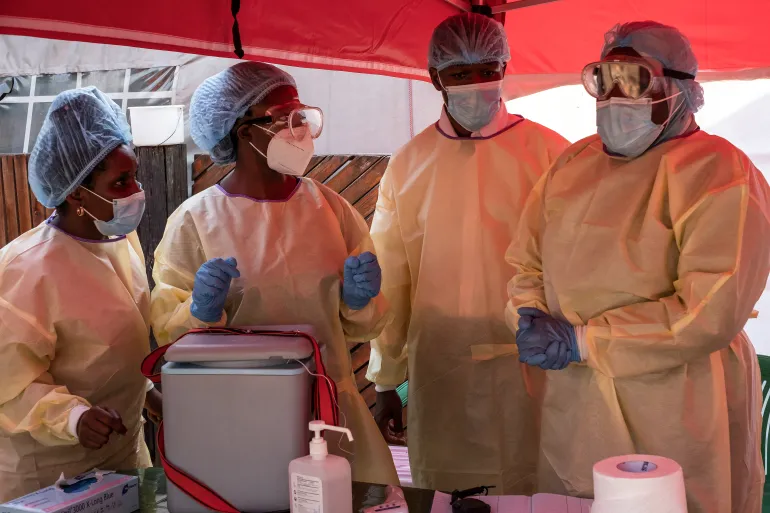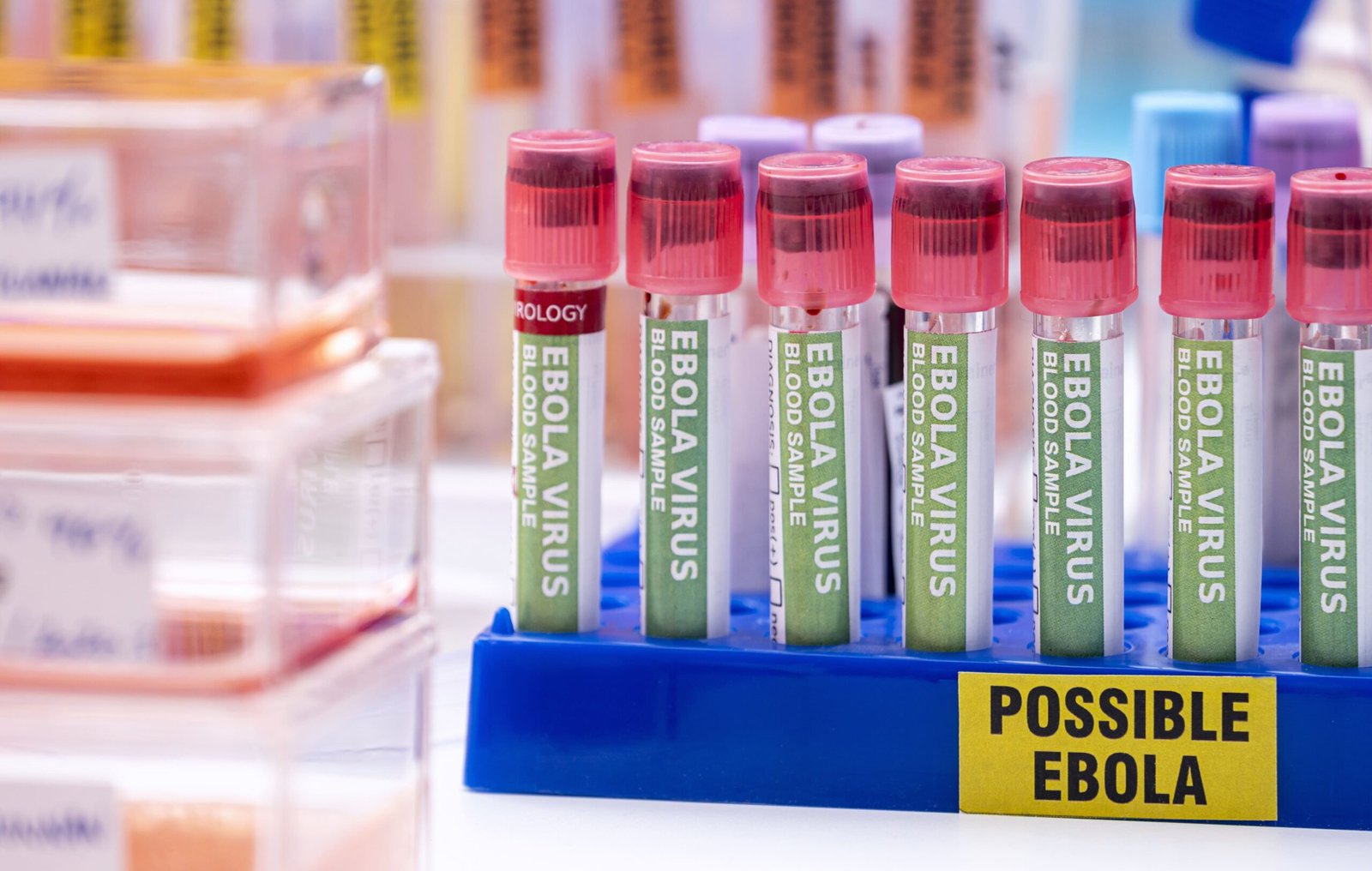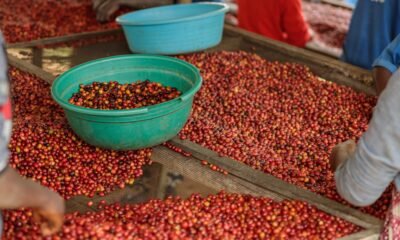Health
Breaking down the Malaria Vaccine Rollout in Uganda
The malaria vaccine will be integrated into Uganda’s routine immunization program starting in April 2025.

Malaria remains one of Uganda’s most pressing public health challenges, significantly contributing to high morbidity and mortality rates, especially among young children. With the planned introduction of the malaria vaccine in April 2025, the Ugandan government aims to alleviate the burden of this life-threatening disease. This article outlines key aspects of the malaria vaccine, including its benefits, safety, and the implementation strategy for a smooth rollout.
Current Malaria Situation in Uganda
Malaria is the leading cause of illness and death in Uganda, affecting thousands of people daily. According to the 2024 Health Management Information System (HMIS) report:
- 32,900 people contract malaria every day, disrupting daily activities.
- 16 deaths occur daily due to malaria, a preventable disease.
- 6,500 children become ill from malaria each day, with 10 succumbing to the disease.
- Treating malaria costs families an estimated UGX 15,000 per episode, which is a significant financial burden.
- Uganda accounts for 4.8% of global malaria cases, with 12.6 million cases reported in 2023.
Introduction of the Malaria Vaccine
The malaria vaccine will be integrated into Uganda’s routine immunization program starting in April 2025. It will be prioritized in districts with moderate to high malaria transmission rates. Key aspects of the rollout include:
- The vaccine will be provided free of charge, funded by the Ugandan government and international partners.
- It will complement, but not replace, other malaria control measures, such as:
- Insecticide-treated bed nets (ITNs)
- Indoor residual spraying (IRS)
- Seasonal and perennial malaria chemoprevention (SMC/PMC)
- Prompt testing and treatment
How the Malaria Vaccine Works
The malaria vaccine stimulates the immune system to prevent the malaria parasite from infecting the liver, stopping the infection from progressing and thereby reducing the risk of severe illness and death.
Benefits of the Malaria Vaccine
The introduction of the vaccine is anticipated to yield significant health and economic benefits, including:
- Preventing 800 cases of severe malaria daily.
- Reducing hospitalizations and deaths among children.
- Saving families UGX 15,000 per treatment that would otherwise be spent on malaria medication and hospital visits.
- Decreasing the national economic burden by saving millions in healthcare costs and boosting productivity.
Safety and Effectiveness
The malaria vaccine has undergone clinical testing involving over 800,000 children in various African countries. It has been successfully used in Ghana, Kenya, Malawi, Cameroon, and South Sudan since 2019. Over 6 million doses have been administered, demonstrating a good safety profile with no serious side effects reported. The vaccine is certified by the World Health Organization (WHO) and approved by the National Drug Authority in Uganda.
Eligibility for the Vaccine
During the rollout phase, all children aged between six to eleven months will be eligible for vaccination. The vaccine will be administered in four doses:
- First dose: At 6 months
- Second dose: At 7 months
- Third dose: At 8 months
- Fourth dose: At 18 months
Complete vaccination is necessary for maximum protection against malaria.
Common Side Effects
The vaccine may cause mild and temporary side effects, including:
- Pain, redness, and swelling at the injection site.
- Mild fever or fatigue.
- In rare cases, fever-induced convulsions, similar to those seen with other childhood vaccines.
Parents and caregivers are advised to seek medical attention if any severe reactions occur.
Availability and Storage
The vaccine will be available at all public and private health facilities that provide routine immunization services. It will be stored at temperatures between +2°C and +8°C to maintain its effectiveness.
Integration with Routine Immunization
Parents are encouraged to take their children for routine immunizations nine times before their second birthday. Health workers will offer guidance to ensure children receive all necessary vaccines on time.
Call to Action
For a successful rollout of the malaria vaccine, all stakeholders have essential roles to play:
- Parents & Caregivers: Ensure children receive all four vaccine doses.
- Community Leaders, Health Workers, Cultural & Religious Leaders: Educate and promote vaccine acceptance.
- Media & Influencers: Share accurate information to counter vaccine misinformation.
- Government & Partners: Ensure sustainable financing and equitable distribution of the vaccine.
- Politicians: Advocate for vaccine uptake and support community sensitization efforts.
The introduction of the malaria vaccine marks a significant milestone in Uganda’s fight against malaria. While the vaccine is not a standalone solution, it serves as a crucial addition to existing prevention strategies. Parents, caregivers, and community leaders must collaborate to ensure all eligible children receive full vaccination for a healthier, malaria-free Uganda.
For more information, contact the Ministry of Health Uganda through their toll-free lines: 0800 100066 / 0800 200 600 or visit www.health.go.ug.

Health
Uganda’s 2025 Ebola-Free Victory, Resilience and Global Prevention Lessons
Uganda was officially declared Ebola-free, marking the end of its sixth Ebola outbreak in just under three months.

Uganda was officially declared Ebola-free, marking the end of its sixth Ebola outbreak in just under three months. The outbreak, caused by the Sudan strain of the Ebola virus, began on January 29, 2025, in Kampala and affected five districts, resulting in 14 confirmed cases and four deaths. Uganda’s swift containment of this urban outbreak, despite challenges such as international aid cuts and the absence of approved vaccines, demonstrates a robust public health response and offers critical lessons for global Ebola prevention.
The outbreak was declared on January 29-30, 2025, after a 32-year-old male nurse died at Mulago National Referral Hospital in Kampala. The virus was confirmed as Sudan Ebola Virus Disease (SUDV) by three national laboratories and was genetically linked to a 2012 outbreak in Luwero, Uganda. Unlike the Zaire strain, which has an approved vaccine, the Sudan strain lacks licensed countermeasures, making containment reliant on public health measures and experimental trials. The outbreak spread to five districts being Kampala, Wakiso, Jinja, Mbale, and one other, posing a significant threat due to Kampala’s dense population of over 4 million. By February 7, 2025, new cases ceased, and the last patient was discharged on March 14, initiating a 42-day countdown. On April 26-28, 2025, Uganda’s Ministry of Health announced the end of the outbreak, a testament to the country’s experience with five prior Ebola outbreaks since 2000.
Uganda’s ability to contain the 2025 outbreak in under three months, its shortest Ebola response to date, was driven by a multi-faceted strategy:
Rapid Detection and Genomic Sequencing
Within 24 hours of the index case’s death, Uganda’s Central Public Health Laboratories confirmed the Sudan strain, and African scientists set a “world speed record” by sequencing the virus, tracing its origins back to the 2012 outbreak. This rapid diagnostic and genomic capability enabled an immediate outbreak declaration on January 30, 2025, activating emergency protocols.
Aggressive Contact Tracing and Quarantine
The Ministry of Health identified 265 contacts of the index case, placing them under strict 21-day quarantine in Kampala, Jinja, and Mbale. Mobile health teams and district task forces monitored contacts daily, preventing further spread. A surveillance gap, exposed when a four-year-old boy died undiagnosed on February 25, was swiftly addressed by intensifying tracing, adding two districts to the response. By February 27, most contacts had completed their quarantine.
Experimental Vaccine Trial
On February 3, 2025, Uganda launched a randomized clinical trial for a candidate SUDV vaccine at Mulago Hospital, using a ring vaccination approach to immunize contacts and contacts-of-contacts. Supported by the International AIDS Vaccine Initiative and WHO, the trial drew on lessons from the 2022 outbreak, demonstrating Uganda’s ability to integrate research into crisis response.
Isolation and Treatment
Confirmed cases were isolated at Mulago Hospital, with suspected cases triaged in temporary units. Supportive care, including rehydration and symptom management, was critical, as no approved SUDV treatments exist. Eight patients were discharged by February 19, and the last patient on March 14, with safe burial practices preventing transmission from the four deaths (two confirmed and two probable).
Public Health Measures
Uganda implemented point-of-entry and exit screenings at airports and borders, which were crucial given Kampala’s role as a transport hub. Community awareness campaigns via radio and local leaders educated the public on Ebola symptoms and prevention, countering misinformation. Healthcare workers used personal protective equipment (PPE), though supply shortages resulting from U.S. aid cuts were mitigated by WHO and local resources.
International and Local Collaboration
Local expertise was evident in Uganda’s laboratories and the Uganda Virus Research Institute, which supported diagnostics and trials. Internationally, the U.S. provided $8 million via the CDC and USAID, despite aid cuts that canceled four contracts, impacting screenings and PPE supplies. The WHO contributed $2 million and technical expertise, while the UN appealed for $11.2 million to support seven high-risk districts. Uganda shared genomic data regionally, aiding preparedness amid Marburg outbreaks in Tanzania and Rwanda.
Urban Setting: Kampala’s high population density risked rapid spread, but targeted interventions in five districts prevented a wider epidemic.
Aid Cuts: The Trump administration’s freeze on USAID funding strained surveillance and PPE supplies, but local and WHO support helped offset this shortfall.
Surveillance Gaps: The delayed diagnosis of a child emphasized the need for improved surveillance, which was quickly addressed through intensified efforts.
By overcoming these challenges, Uganda showcased resilience and innovation in its public health response, setting an example for global health efforts against Ebola and similar infectious diseases.
Features
Why Artists Turn to Drugs

The dream starts brightly: a song, a stage, a legacy. For countless artists, it’s a fire that burns hot until it doesn’t. Take Josh not his real name, but a true soul who’s been there. Fresh from university with a Bachelor’s degree in Industrial and Fine Art, he didn’t settle for a cubicle. “I wanted to create everything,” he says, his voice steady but heavy with memory. “The music, the videos, the designs, I’d be the whole machine.” As a songwriter and producer, he plunged into the industry, hunting for the hit that would make his name. But the climb was slow, and the years bled into each other as he sold beats for pennies and stacked unreleased songs that gathered dust.
By the age of 30, Josh had little to show but a few indie tracks and a growing ache from time lost. Then COVID hit, silencing the world and his hustle. Gigs vanished, pitched songs stayed shelved, and depression crept in like a shadow. “I was fighting wars that weren’t mine,” he says, “caught in industry politics, losing allies over things I couldn’t fix.” Drugs slipped in quietly not as inspiration, but as a way to mute the regrets piling up. “I should’ve taken that job after school,” he admits. “It would’ve kept me fed while I figured this out.”
Josh’s story isn’t unique, it’s a refrain echoed across the creative world, from bedroom studios to sold-out arenas. In Uganda, whispers circulate about Geosteady, the Afrobeat star behind “Owooma” and “Tokendeeza.” claiming he’s in rehab hint at a battle with addiction. It’s unconfirmed, just speculation, but it fits the pattern of an artist under pressure, teetering on the edge. Whether true or not, it raises a lingering question: Why do so many artists turn to drugs?
The answers aren’t simple, but they’re rooted in the crucible of the creative life. The pressure to produce is relentless, each track becomes a gamble on relevance, and every year without a win is a weight on the soul. For Josh, it was the grind of waiting for a break that never came. Research supports this; the Journal of Substance Abuse Treatment links high-stress creative fields to substance use as a coping tool. The National Institute on Drug Abuse adds that mental health struggles like the depression and anxiety Josh faced double the odds of reaching for a fix.
The culture plays a part as well. Music scenes can feel like a nonstop party, where drugs are as common as the beat drops. “It’s just there,” Josh says. “You don’t always choose it, it chooses you.” And then there’s the myth of the “tortured artist,” suffering for art’s sake. Society consumes this notion, think Hendrix, Winehouse turning pain into legend. But Josh shakes his head. “It’s not art, it’s survival. You’re not creating better; you’re just hurting less.”
For Josh, the spiral may have looked like depression feeding substance use, a diagnosis too common among artists. The instability of the gig economy, the emotional toll of rejection, and the quiet despair of “what if” nudged him toward escape. Alcohol could have been the start; harder substances, a deeper dive. Recovery meant stepping back. “I got a job and it was nothing fancy, just steady,” he says. “I wrote on my terms. Therapy helped when I could get it.” Not every artist has that lifeline; access to support varies, and in places like Uganda, resources can be scarce.
This story isn’t new, but it’s human. It’s Josh, staring down a decade of “what ifs.” It’s the whispered rumors of a star like Geosteady, whether true or not. It’s the push and pull of creation and collapse, played out in studios and souls worldwide. “I wish I’d known it didn’t have to be all or nothing,” Josh reflects, holding a quiet hope for those still in the fray. For every artist teetering on the edge, the prayer is that the music doesn’t fade to silence but rises again, stronger.
Blog
A Growing Ebola Threat in Uganda and How to Stay Safe
On January 29, 2025, Uganda’s Ministry of Health declared an outbreak of Sudan virus disease (SVD), a deadly strain of Ebola. This marked the country’s eighth encounter with this hemorrhagic fever since 2000.

On January 29, 2025, Uganda’s Ministry of Health declared an outbreak of Sudan virus disease (SVD), a deadly strain of Ebola. This marked the country’s eighth encounter with this hemorrhagic fever since 2000. The outbreak began in Kampala, the bustling capital, when a 32-year-old male nurse died from the virus at Mulago National Referral Hospital. His death raised alarm bells because he sought treatment across multiple districts like Kampala, Wakiso, and Mbale. He even consulted a traditional healer, potentially spreading the virus before it was identified. As of March 18, 2025, the outbreak has caused multiple fatalities and tested Uganda’s resilience, but there are glimmers of hope amid the international response.
By March 5, 2025, the World Health Organization (WHO) reported 14 cases, 12 confirmed and 2 probable spanning six districts: Kampala, Jinja, Kyegegwa, Mbale, Ntoroko, and Wakiso. Four deaths have occurred, yielding a case fatality rate of 29%, which is lower than the historical average of 41% to 70% for the Sudan strain. The victims range from a 1.5-year-old child to a 55-year-old adult, with a mean age of 27 and a slight male majority (55%). A notable cluster of cases emerged in late February when a child under 5 died at Mulago Hospital, linking to additional infections.
The outbreak remains tied to a single transmission chain, with no spread beyond Uganda’s borders. As of March 17, there were no patients in care, and no new cases had been confirmed since March 2 raising cautious optimism that the worst may be over. If no further cases emerge, the outbreak could be declared over by mid-April, 42 days after the last exposure.
Uganda’s response has been prompt, utilizing experiences from its 2022 Ebola outbreak, which ended in January 2023 after 164 cases and 77 deaths. Within four days of the 2025 outbreak’s declaration, WHO and partners initiated a groundbreaking vaccine trial on February 3, utilizing a candidate from IAVI. This ring vaccination strategy targets high-risk contacts, marking a first in testing efficacy against Sudan virus disease during an outbreak. Experimental treatments, including a monoclonal antibody and remdesivir, are also undergoing clinical trials. By March 5, 192 new contacts were under surveillance, while 299 had completed a 21-day monitoring period.
International support has been critical. WHO allocated $3 million from its Contingency Fund for Emergencies, and Sweden contributed approximately $2 million (7.3–7.5 billion Ugandan shillings) to bolster Uganda’s efforts, likely aiding vaccine and containment initiatives. However, challenges persist. The absence of an approved vaccine or treatment for Sudan virus disease, combined with reported cuts in U.S. foreign aid under the Trump administration, has strained resources, according to U.S. officials on March 7.
Ebola spreads through direct contact with bodily fluids ie.blood, saliva, sweat, or vomit from an infected person or via contaminated surfaces. While Uganda’s outbreak is localized, understanding prevention is vital, especially in affected areas or for travelers. Here’s how to stay safe:
- Practice Good Hygiene: Wash hands frequently with soap and water or use an alcohol-based sanitizer. Avoid touching your face, especially your mouth, nose, and eyes.
- Avoid Contact with Sick Individuals: Stay away from anyone showing symptoms like fever, vomiting, diarrhea, or bleeding. Ebola is most contagious when symptoms are severe.
- Handle Animals with Care: Ebola can originate from wildlife such as bats or monkeys. Avoid handling bushmeat or wild animals, especially if they are sick or dead.
- Use Protective Gear: Healthcare workers and caregivers should wear gloves, masks, and gowns when near patients. Properly dispose of contaminated materials.
- Stay Informed: Follow updates from Uganda’s Ministry of Health or WHO. Avoid rumors and rely on verified sources.
- Seek Medical Help Early: If you experience fever, fatigue, muscle pain, or bleeding after potential exposure, isolate yourself and contact a health facility immediately.
Community education and contact tracing are crucial to Uganda’s strategy, emphasizing the importance of reporting symptoms and avoiding traditional practices like touching the deceased during burials, which have fueled past outbreaks.
The Ebola outbreak in Uganda in 2025 highlights both the danger of emerging diseases and the power of coordinated action. The vaccine trial offers hope for a future tool against Sudan virus disease, while Sweden’s aid and WHO’s leadership demonstrate global solidarity. For Ugandans in affected districts, vigilance remains essential. Washing hands, avoiding risks, and heeding health advisories could be the difference between containment and catastrophe. As the world watches, Uganda’s efforts may shape how we tackle Ebola for years to come.
-

 Entertainment5 months ago
Entertainment5 months agoMuseveni’s 2025 Copyright for Musicians breakdown
-

 Business5 months ago
Business5 months agoUganda’s Ministry of Finance projects significant growth opportunities in 2025
-

 Policies5 months ago
Policies5 months agoBreakdown of the Uganda Police Force Annual Crime Report 2024
-

 Entertainment5 months ago
Entertainment5 months agoIsaiah Misanvu Teams Up with Nil Empire for a Soul-Stirring Anthem of Gratitude and Transformation “Far Away”
-

 Sports4 months ago
Sports4 months agoThe Transformative Impact of World Cup Qualification for Uganda
-

 Policies5 months ago
Policies5 months agoIs Uganda’s Shs10m Fine the WORST Thing for Cohabiting Couples?
-

 Business5 months ago
Business5 months agoUber and Lyft are finally available in all of New York State
-

 Entertainment5 months ago
Entertainment5 months agoUganda Cracksdown On Vulgar Music Content | Gloria Bugie, Shakira Shakira, targeted










